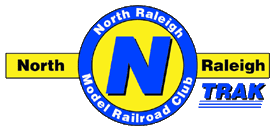 |
Digital Command Control |
 |
Installing Plug-N-Play Decoders in N Scale Locomotives | ||
Just as Plug-N-Play doesn't always work as advertised on computers, sometimes some extra effort is required to make Plug-N-Play (PnP) decoder installations work just as they should in N-scale locomotives. The following are some problems encountered and suggested solutions for the various PnP decoders, as well as other problems related to good operation of specific locomotives. There is also a discussion on relacing the amber LEDs that come with some decoders with the white LEDs that are now appearing on many new locomotives. |
Digitrax DN121IP Decoder
Remove the Tender Shell |
Digitrax DN141K2 / DN163K2 Decoders |
Digitrax DN144K / DN163K1A Decoders |
Digitrax DN145K / DN163K0A Decoders |
Digitrax DA120 / DN146A / DN163A0 Decoders |
Digitrax DN147A / DN163A1 Decoders |
Digitrax DN149K2 / DN163K1A Decoder |
Digitrax DN163K0B Decoder |
The various conversions listed below provide detailed descriptions covering installations actually performed by model railroaders throughout the world, and reflect the experiences encountered during those installations.
|
Locomotive |
Author |
|---|---|
Atlas EMD GP38 |
|
Atlas GP40-2 |
|
Atlas EMD SD35 |
|
Atlas EMD SD50/60/60M |
|
Atlas GE B30-7 |
|
Atlas GE U25B |
Many new locomotives are being equipped with white LEDs for headlights on their DC light boards, whereas Digitrax Plug-N-Play decoders continue to be supplied with amber LEDs. Once you have seen the realistic appearance of a white headlight, the amber headlights no longer seem to pass muster. When installing a Plug-N-Play decoder the amber LEDs on the decoder can be replaced with the white LEDs from the locomotive light board. You can also use a Golden White or Warm White LED from Richmond Controls.
Now install the decoder in the locomotive, and test the installation. Make sure the LEDs light as they should when your turn F0 on and change directions of the locomotive. If the LED does not light as it should (especially if one lights and the other doesn't) check the polarity of the LED carefully in case it was installed reversed. |
Home page: |
http://trainweb.org/nrmrc/ |
URL This Page: |
http://trainweb.org/nrmrc/dcc/plugnplay.html |
Last Updated: |
September 2, 2007 |
Webmaster: |
John M. Wallis (Email to John) |
/This page and all contents are Copyright 1997–2007 by the North Raleigh Model Railroad Club. | |||